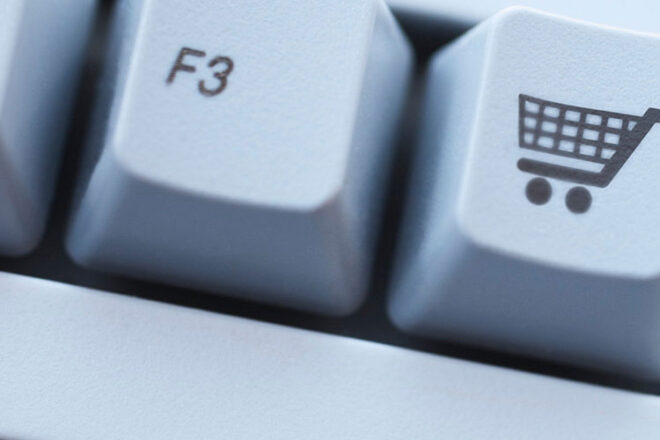How to start a retail business
Editorial Team
8 min read
Opening a business can be one of the most exciting times in an entrepreneur’s life. After saving, planning, and working for someone else, you are finally ready to pursue your passion and become your own boss.
Yet, opening a retail store is also a lengthy process with surprises and challenges along the way. Whether you’re in the ideation phase or getting serious about starting a small business, this guide covers some of the steps to opening up a store to help guide you through the process.
Steps to opening a store
Where should you start when it comes to opening a retail business? Is it learning the legal requirements for opening a retail store? Choosing brick-and-mortar, eCommerce, or a hybrid approach? Or searching for the perfect products to sell?
Read on to discover the steps to opening a retail store.
Create a business plan
The best place to start is your business plan, because it serves as a road map to opening your store. A good business plan can help save decision-making time later on by answering many of the questions small business owners have.
Business plans define the business mission, vision, goals, and scope. These documents provide a framework for business growth. By following the plan, business owners can grow their retail shop in alignment with their values and mission.
A business plan isn’t a one-and-done document. Instead, it is a living document that can evolve over time, alongside the business.
A typical business plan outlines things such as:
- Retail products: What product mix will your store sell? Are you creating these products yourself or purchasing inventory from vendors? Here is where you’ll list out the retail niche, product mix, and any vendors and suppliers you plan to work with.
- Target market: Who is your customer base? What are they looking for in products within your niche?
- Marketing strategies: Where do your customers hang out, physically and online? How will you connect with them, introduce your brand, and get them to shop with you? Your marketing strategies should connect to the target audience you identified above.
- Store location and layout: What neighborhood does your store belong in? What will the physical store look like? How big does it need to be? How will merchandise be displayed?
- Partnerships and reach: What strategic partnerships will broaden your brand’s reach? How will your business partner with other local businesses or community organizations, such as a Chamber of Commerce?
- Employees and staff: What are your store’s staffing needs by role, time of day, or time of year? How will you recruit and train employees?
- Finances: What is your business’s financial forecast? When you’re starting from scratch, this involves a lot of guesswork. But it’s worth going through the motions to get an idea of your overhead costs (such as rent, inventory, and wages) and income potential.
Estimate startup costs
It’s normal for a retail store to have high startup costs. You’ll need to find the business location, pay rent, invest in signage and shelving, purchase inventory, hire staff, get a website up and running, and do a big marketing push. This all happens before you’ve even sold a product.
Ideally, the launch is a success, and the shop is able to recoup its startup costs and earn revenue.
Still, you’ll want to estimate startup costs to the best of your abilities. Doing so helps you understand whether expenses fit within your budget. If you launch without an estimate of startup costs, you run the risk of overspending.
Typically, retail store startup costs include:
- Rent/location: In high-traffic, high-value neighborhoods, the rent prices will be higher. This can be offset by the volume of customers.
• Merchandise: Merchandise cost represents the cost of your inventory. For a retail store, these are physical items you are making yourself or purchasing from other suppliers.
• Operational costs: Operational costs include any costs necessary to keep the business running. Utilities, such as electricity and heat, fall under operational costs. So do hiring, training, and managing employees.
• Marketing budget: To introduce your new shop to potential customers, you’ll need to create a marketing plan that includes a marketing budget.
• Technology: Physical stores need technology, including a retail point of sale (POS) solution that manages inventory and processes payments and refunds. Retail stores may also need a website, especially if the plan is to sell products online as well as in-store. And, don’t forget about other business management software such as employee scheduling, payroll processing, and bookkeeping programs.
Get funding and forecast financials
While some entrepreneurs can use bootstrapping as an option (or the process of growing a business with very limited resources), most business owners rely on startup funding to launch. Traditionally, this funding can come in the form of a bank loan, but alternatives can include credit cards, crowdsourcing, and Small Business Administration (SBA) loans, just to name a few.
To obtain a bank loan or business credit card, you’ll first need to get your finances organized.
If you made financial projections in the business plan, the startup costs you estimated will come in handy when you approach lenders.
Forecast the financials for your business by looking to local market data and statistics relevant to your niche to set standards on income after starting a brick-and-mortar store.
READ: Why forecasting is crucial to your business plan
Register your business
There are some legal requirements for opening a retail store that you need to follow before you can open your doors. You’ll need a business name and legal structure in order to register your business. Registration happens through your state’s Secretary of State website. After registration, you’ll want to obtain an employer identification number (EIN) from the Internal Revenue Service (IRS). Think of this as a Social Security number for your business entity.
States have different legal requirements for business insurance, permits, and licensing. Double check with state and county websites to make sure you’ve ticked all the boxes. We’ve created some content for starting a small business in specific states. See if we have your state here.
Find an ideal location
Like the old adage says, it’s all about location. The right location can naturally draw in your desired audience and help propel your business to a successful launch. This resource on finding a business location can help you understand what to look for.
Create merchandise vendor partnerships
What do you need to open a store? Merchandise.
Buying wholesale for a small business is one way to approach merchandising. Some small business owners prefer to take a “buy local” or “support small business” approach to merchandising.
Regardless of which tactic you take, you’ll want to order sample merchandise, vet it for quality, agree on pricing, and understand order minimums. Once you and your vendors are in agreement, formalize the arrangements using partnership agreements.
Set up and integrate payment systems
As mentioned, retail stores need to ring up transactions and accept payments. Rather than get one technology for managing inventory and another for handling sales, why not get an all-in-one POS system designed for retail operations?
Retail POS systems handle all the financial transactions, from sales to returns to exchanges. They provide at-a-glance insight into inventory levels and sales trends, so you know when it’s time to reorder. They also give you the option to manage staff, schedule employees, and process payroll.
These days, many retail businesses also rely on online sales. Since an eCommerce website can accept orders 24/7, it supports the store by providing another pathway to sales. For this reason, it’s wise to choose a retail POS that can handle both in-person and online sales.
Once you select the right POS for your store, you’ll need to set it up on the back end. Add inventory SKUs and quantities. Set up par alerts to be notified when inventory levels drop below a minimum. Input employees, schedules, and payroll information to process paychecks, schedule employees, and keep the store running smoothly.
Open your store to the public
Once you’ve designed, stocked, and staffed the store, it’s time to have a formal opening!
Use your marketing plan to promote your store, generate buzz, and let customers know you exist. This way, on the day you open your doors, your community will be ready to support your new store.
Starting a retail business is a lot of work. However, you don’t have to go it alone. When it comes to learning how to open a retail store, Clover has a wide range of business management solutions geared towards helping small businesses run their entire operation from accepting payments to managing employees to engaging with customers.
Reach out to a Clover Business Consultant to explore solutions today.
CONTACT SALESThis information is provided for informational purposes only and should not be construed as legal, financial, or tax advice. Readers should contact their attorneys, financial advisors, or tax professionals to obtain advice with respect to any particular matter.
Related Posts
Payment gateway vs. shopping cart
Is MOTO credit card processing obsolete?
Popular Topics
Stay In Touch
Sign up and learn more about Clover.
Thank you for your subscription!
Recent Stories
- Jewelry store supplies and equipment needed for opening day
- How small businesses can use employee discounts to retain staff
- Tips and tricks for opening an outdoor pop-up restaurant
Please share your contact information
to access our premium content.
Thank you for sharing your contact information.
Download Now





